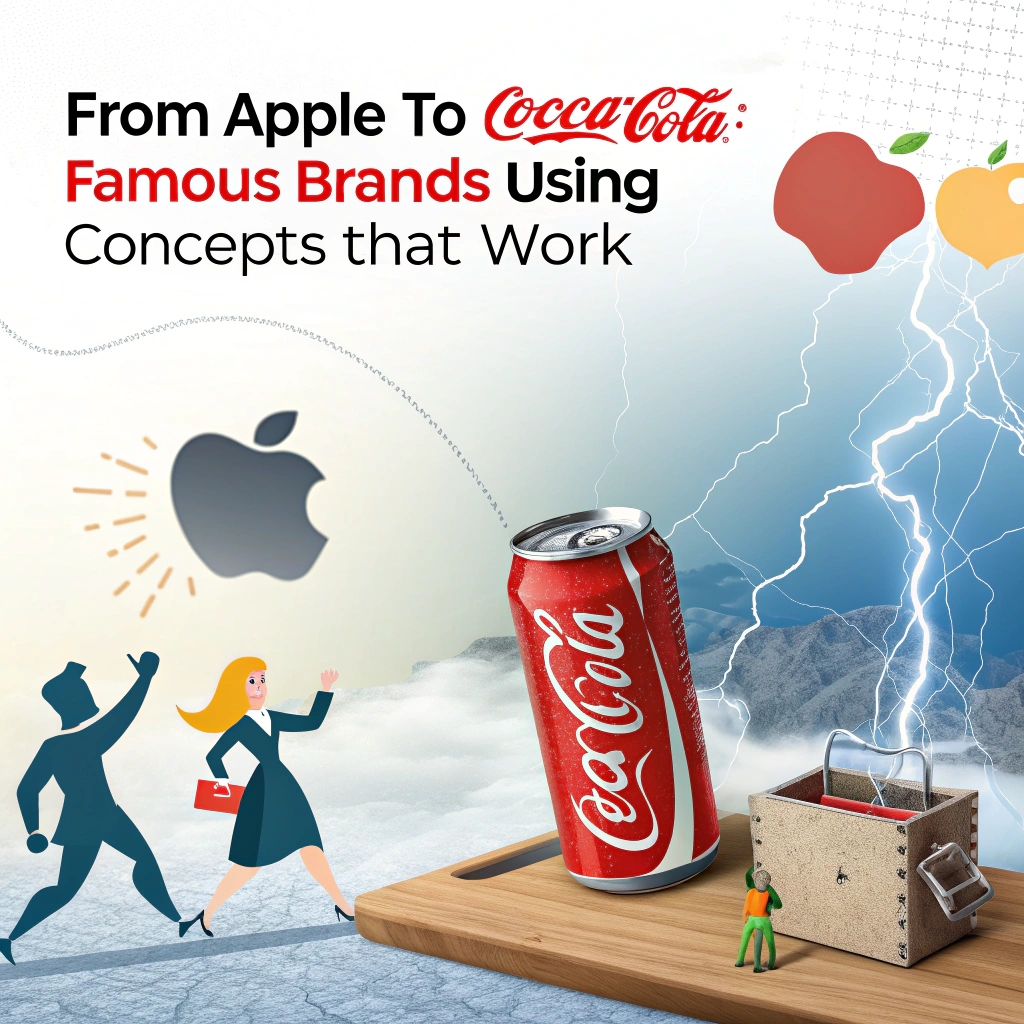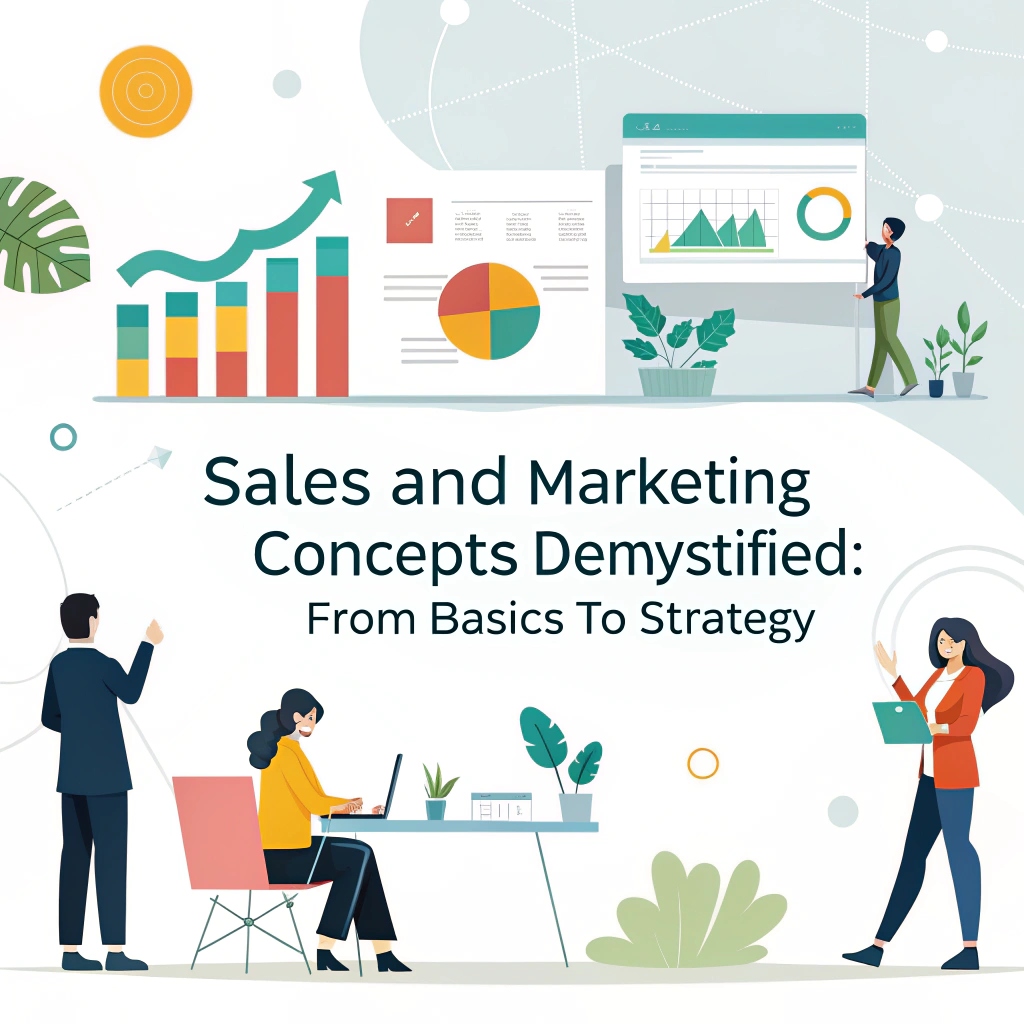
Introduction: The Power of a Selling Concept
In today’s competitive marketplace, selling isn’t just about showcasing a product—it’s about delivering an idea, a lifestyle, or a belief. The most iconic brands in the world—from Apple to Coca-Cola—don’t just sell gadgets or soda. They sell concepts that resonate emotionally, culturally, and personally with their target audience.

This blog unpacks:
- The evolution of selling concepts
- How global brands implement these concepts to dominate their industries
- Real-world examples from Apple, Coca-Cola, Nike, Tesla & more
- The psychology behind these strategies
- Tools modern marketers can use to implement concept selling
- How small businesses and salespeople can replicate these methods to attract and retain clients
Section 1: What Is a “Selling Concept”?
In marketing theory, a selling concept refers to the strategy where a business prioritizes aggressive promotion and persuasion—usually when the product isn’t something customers naturally think to buy.

However, in modern sales and branding, this concept has evolved into a more emotional, psychological, and aspirational approach. The idea is to sell the emotion or identity attached to the product, not just the product itself. Think of it as:
- Selling the feeling of owning an iPhone
- Selling the happiness linked to a bottle of Coke
- Selling status through a luxury watch
Section 2: Evolution of Selling Concepts Over the Decades

Let’s briefly explore the timeline of key selling paradigms:
| Era | Dominant Selling Concept | Key Traits |
|---|---|---|
| 1900s | Production Concept | “Make it cheap, people will buy” |
| 1920s | Product Concept | “Quality sells itself” |
| 1950s | Selling Concept | “Persuade them to buy” |
| 1980s–2000s | Marketing Concept | “Understand their needs” |
| 2010s–Today | Societal/Conceptual Selling | “Sell the belief or lifestyle” |
Now, let’s break down how some of the most successful brands have integrated these principles.
Section 3: Apple – Selling Innovation and Identity

What They Sell:
Not just tech products, but a concept of creative freedom, elegance, and individual empowerment.
Conceptual Strategy:
- “Think Different” campaign: Not about the product, but about being a visionary.
- Focuses on user lifestyle, not specs.
- Every ad sells simplicity, aesthetics, and human-centric design.
Real-Life Marketing Example:
The 2007 launch of the iPhone didn’t highlight RAM or speed. Instead, Apple introduced it as “an iPod, a phone, and an Internet communicator”—revolutionizing how people saw mobile devices.
Key Tools Apple Uses:
- Visual storytelling through minimalist videos
- In-store experience built around user interaction (Apple Stores = concept zones)
- Ecosystem marketing: All devices sync to offer a seamless identity
Client Attraction Lesson:
Apple fans buy products without comparing competitors, because they buy into the idea of Apple.
Section 4: Coca-Cola – Selling Happiness and Togetherness

What They Sell:
Not just soda—but the concept of joy, celebration, and connection.
Conceptual Strategy:
- “Open Happiness” and “Taste the Feeling” were not product-driven slogans—they were emotion-driven.
- Coke sells moments of friendship, family, and festivity.
Iconic Real-World Example:
The “Share a Coke” campaign that personalized bottles with names led to a 2% increase in U.S. sales after a decade of decline. Why? People were no longer buying a drink—they were buying a moment of connection.
Key Tools Coca-Cola Uses:
- Seasonal storytelling (Christmas, World Cup, Olympics)
- User-generated content via personalized campaigns
- Heavy emotional video marketing
Client Attraction Lesson:
Even in a saturated market, you can win hearts—not just wallets—by creating shared emotional value.
Section 5: Nike – Selling Self-Belief and Motivation

What They Sell:
Not just sportswear, but the concept of self-empowerment through action.
Core Conceptual Message:
- “Just Do It” isn’t about shoes—it’s about grit, courage, and discipline.
- Nike champions everyone from pro athletes to first-time joggers.
Real-World Ad:
The Colin Kaepernick ad (“Believe in something. Even if it means sacrificing everything.”) led to a 31% sales increase in just 3 days, despite political backlash.
Tools Nike Uses:
- Athlete stories that focus on struggle, not just success
- Inspirational brand films
- Community apps like Nike Training Club
Client Attraction Lesson:
Empower your audience to see themselves as heroes in their own story—your product becomes the gear they need to win.
Section 6: Tesla – Selling the Future and Social Impact

What They Sell:
Not just electric cars—but the idea of being a change-maker and driving a better tomorrow.
Conceptual Strategy:
- Tesla rarely advertises. Instead, Elon Musk sells a vision: sustainable energy, autonomy, and innovation.
- Their customers see themselves as part of a revolution, not buyers of cars.
Real-World Influence:
When Tesla released the Cybertruck, its design was divisive—but 250,000+ pre-orders came in within a week. Why? It was a conceptual buy-in, not a product-based decision.
Key Tools:
- Viral launches and social proof
- Storytelling via Elon Musk’s public presence
- User evangelism: Tesla owners market the brand themselves
Client Attraction Lesson:
A strong mission-driven narrative can outperform traditional marketing.
Section 7: Other Brands Using Conceptual Selling Successfully

Patagonia – Selling Environmental Responsibility
- Campaign: “Don’t Buy This Jacket”
- Message: Conscious consumerism > overconsumption
- Impact: Increased customer loyalty and trust
Airbnb – Selling Belonging
- Campaign: “Live There”
- Concept: Don’t travel like a tourist—live like a local
- Impact: Transformed hospitality from lodging to experiences
L’Oréal – Selling Self-Worth
- Slogan: “Because You’re Worth It”
- Emphasis: Empowerment, not just beauty
- Result: Global brand loyalty for 50+ years
Section 8: Tools to Build and Promote Selling Concepts
1. Storytelling Platforms
- Canva, Prezi, or Adobe Express: Build visually emotional brand stories
- Storydoc: Interactive concept-selling decks
2. Insight & Feedback Tools
- Typeform / Hotjar: Understand user sentiments to tailor emotional concepts
- Google Trends: Track emerging emotional or cultural ideas
3. Campaign Launch Tools
- Meta Ads Manager: Run emotion-driven video ads
- BuzzSumo: Find high-performing content concepts in your niche
- Mailchimp: Story-driven email funnels based on user behavior
4. CRM and Client Touchpoint Tools
- HubSpot or Salesforce: Create personalized journeys around concepts
- Notion/ClickUp: Map customer goals and match them with your concept value
Section 9: How Small Businesses Can Apply These Brand Strategies

You don’t need a billion-dollar budget to sell like Apple or Nike. Here’s how:
Step 1: Define Your Concept
Ask yourself:
- What emotion does my product fulfill?
- What belief does my audience connect with?
- What identity does my product support?
Step 2: Turn the Concept Into a Campaign
Example for a life coach:
- Concept: “You already have the answers within.”
- Slogan: “Unlock You.”
- Visuals: Calm, journal-based, empowerment imagery
- Content: Client stories, daily affirmation emails
Step 3: Use Stories and Clients
- Showcase your customers’ transformation stories
- Use testimonials that highlight emotional outcomes, not features
Section 10: Benefits of Selling Through Concepts
| Selling Strategy | Transactional Selling | Conceptual Selling |
|---|---|---|
| Focus | Features & Price | Emotions & Identity |
| Outcome | One-time sale | Brand loyalty |
| Buyer Type | Price-conscious | Purpose-driven |
| Competitive Edge | Slim | Strong & Differentiated |
Section 11: Challenges in Conceptual Selling
Even with its power, conceptual selling isn’t without pitfalls:
- Misalignment: If your actual product doesn’t fulfill the promised concept, it breaks trust.
- Overpromising: Don’t sell a dream you can’t deliver.
- Cultural Misfires: Concepts must align with regional and social sentiments.
Tip: Always test messages via small campaigns before full launches.
Section 12: Final Thoughts — Create, Don’t Just Sell

The biggest takeaway from brands like Apple and Coca-Cola isn’t their budget—it’s their clarity of concept. They know what their product means to people, and they lean into that meaning with every campaign, launch, and ad. As a business owner, salesperson, or marketer, if you want to scale:
- Don’t just ask: “What am I selling?”
- Ask: “What am I helping them become?”
Conclusion: The Concept That Wins

Your product may be a service, a tool, a beverage, or an app—but it has the power to transform lives when positioned around a concept people deeply care about. Whether it’s joy, freedom, achievement, or purpose—find your angle, build your story, and watch your audience transform from passive buyers to loyal believers.
“People don’t buy what you do; they buy why you do it—and the story you help them believe.” — Kundan Ranjan Tiwary, Sales LiftUp






